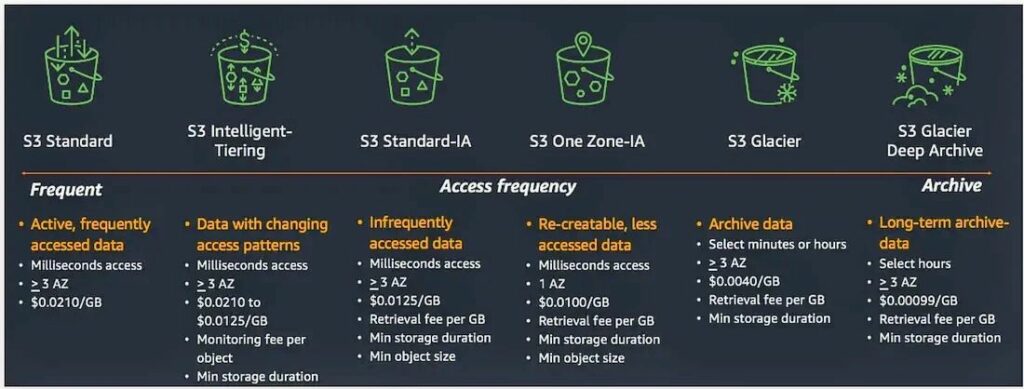AWS S3 : In the digital age, data storage and management have become crucial for businesses of all sizes. Amazon Web Services (AWS) offers a robust and reliable solution in the form of Amazon Simple Storage Service (S3). In this article, we will explore what AWS S3 is, its key features, and the different storage classes it offers.
What is AWS S3?

Amazon S3 is a cloud storage service provided by AWS that allows users to store and retrieve any amount of data at any time. It is designed for scalability, durability, and security, making it a popular choice for businesses looking to store data securely in the cloud. AWS S3 is widely used for a variety of use cases, including backup and restore, disaster recovery, archiving, and data lakes.
#Introduction to Amazon Simple Storage Service (S3) – Cloud Storage on AWS
#Getting started with Amazon S3 – Demo
Features of AWS S3
Scalability
One of the key features of AWS S3 is its scalability. Users can store any amount of data without worrying about capacity constraints. It can automatically scale to accommodate growing data storage needs, ensuring that users can access their data without any interruptions.
Durability
Another important feature is its durability. Data stored in S3 is replicated across multiple Availability Zones within a region, ensuring that it remains highly available and durable. This replication helps protect against data loss due to hardware failures or other unforeseen events.
Security
AWS S3 offers several security features to protect data stored in the cloud. Users can control access to their data using permissions, encryption, and other security features. AWS S3 also supports compliance standards such as GDPR, HIPAA, and PCI DSS, making it suitable for storing sensitive data.
Storage Classes in AWS S3


AWS S3 offers different storage classes to help users optimize their storage costs based on their data access patterns. The storage classes include:
- Standard: Ideal for frequently accessed data that requires low latency.
- Infrequent Access (IA): Suitable for data that is accessed less frequently but requires rapid access when needed.
- One Zone-IA: Similar to IA but stores data in a single Availability Zone, reducing costs.
- Intelligent-Tiering: Automatically moves data between different storage classes based on access patterns, optimizing costs.
- Glacier: Designed for long-term storage of data that is rarely accessed. Offers lower storage costs but longer retrieval times.
Using the appropriate storage class based on data access patterns can help users save on storage costs while ensuring data remains accessible when needed.
Conclusion
In conclusion, AWS S3 is a powerful and versatile cloud storage service that offers scalability, durability, and security for storing data in the cloud. With its various storage classes, users can optimize their storage costs based on their data access patterns. Whether you are a small business looking to securely store your data or a large enterprise with complex data storage needs, AWS S3 can provide a reliable solution.



Rather than do our usual revisit where we compare the RX 580 head-to-head with the GTX 1060 6GB or a range of newer GPUs, today’s
comparison is going to be very different and not something we’ve done
before.